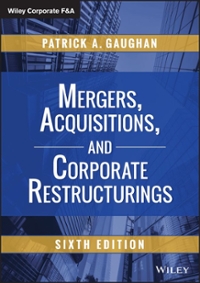Question
What are you are your thoughts? see below Article Title: Capital Budgeting Techniques Used by Small Business Firms in the 1990s Article Link: https://lopes.idm.oclc.org/login?url=https://search.ebscohost.com/login.aspx?direct=true&db=bth&AN=600492&site=eds-live&scope=site&custid=s8333196&groupid=main&profile=eds1 Article
What are you are your thoughts? see below
Article Title: Capital Budgeting Techniques Used by Small Business Firms in the 1990s
Article Link: https://lopes.idm.oclc.org/login?url=https://search.ebscohost.com/login.aspx?direct=true&db=bth&AN=600492&site=eds-live&scope=site&custid=s8333196&groupid=main&profile=eds1
Article Summary:
While this article is from the 1997 I believe it still holds true for small businesses in today's market. This article focuses on capital budgeting for small businesses (less than $5 million in sales and 100 employees). Historically most capital budgeting analyses have been focused on large corporations. Small businesses are essential to the American economy and "accounted for 80% of the created jobs in the 1980s and two-thirds of the nation's workforce" (Block, 1997). The focus of capital budgeting is very different for small business owner compared to their larger counterparts. Small businesses are primarily focused on the timeframe between funding opportunities and need quicker return on investments than large companies. Large companies typically have other forms of revenue to offset poor decisions or investments that have a longer return period. Therefore, thorough capital budgeting analyses are important for small business owners. The study revealed that the payback method is the predominant form of investment analysis. This can be attributed to "simplicity, emphasis on liquidity, and response to external financing pressures" (Block, 1997). The major difference between small businesses and large corporations is in the last point about external financial pressures. Banks drive the schedule for many small businesses and when polled many stated that the short-term obligations of a loan often drive the necessary payback period of an investment. This results in small businesses sometimes selecting a less desirable option to meet a loan requirement when another option could result in more long-term wealth.
Article Reaction:
This was a very interesting article to read. While I was reading it I kept reflecting on how my company, which would be considered a large corporation, handles capital budgeting. We have many revenue streams and make investment decisions with the benefit of a long runway. It is interesting to look at this same scenario from a small business owner's perspective. Many times small businesses and startups are just trying to get by and operate paycheck-to-paycheck. They are reliant on bank loans which ultimately have a maturity timeline. It is frustrating to know that small businesses must make financially detrimental decisions to choose an investment option with a quicker payback period simply to make loan payments. I understand the position of the bank but if a small business owner can show promising NPV for an investment over a longer period then it could be very beneficial to both the owner and the bank to wait it out. I'm sure there are investors that realize this and are more patient when offering loans, but I believe this is a missed opportunity.
Reference:
Block, S. (1997). Capital budgeting techniques used by small business firms.. Engineering Economist, 42(4), 289. https://doi-org.lopes.idm.oclc.org/10.1080/00137919708903184
REPLYST
Step by Step Solution
There are 3 Steps involved in it
Step: 1

Get Instant Access to Expert-Tailored Solutions
See step-by-step solutions with expert insights and AI powered tools for academic success
Step: 2

Step: 3

Ace Your Homework with AI
Get the answers you need in no time with our AI-driven, step-by-step assistance
Get Started


